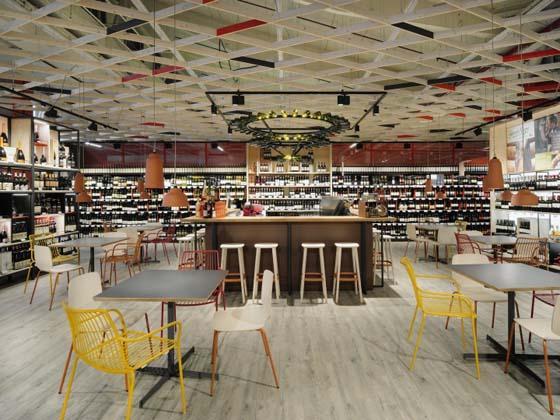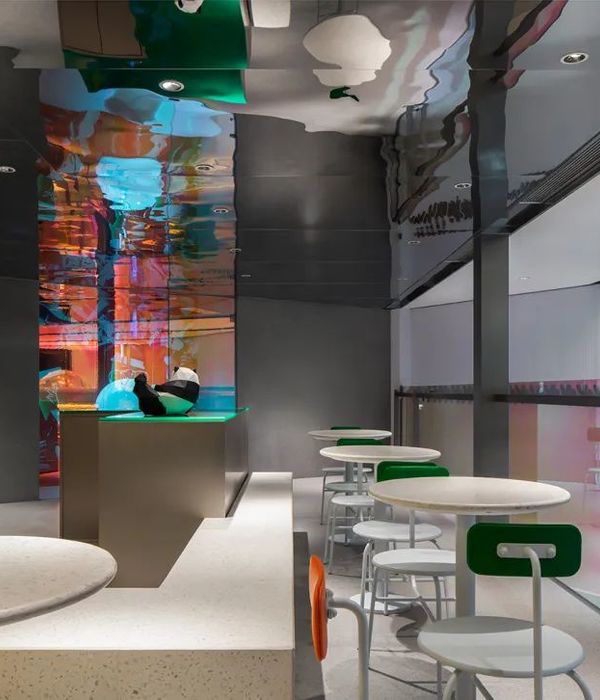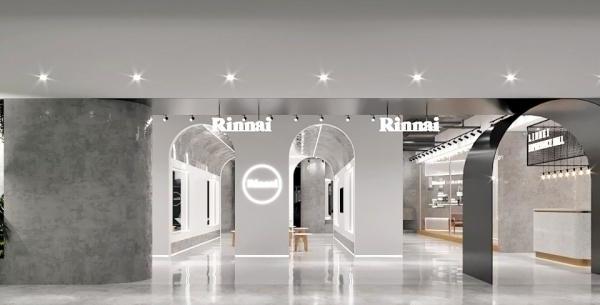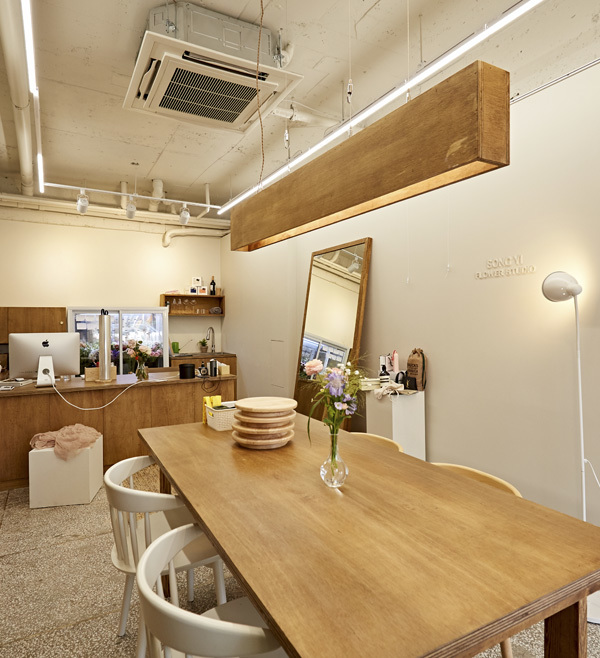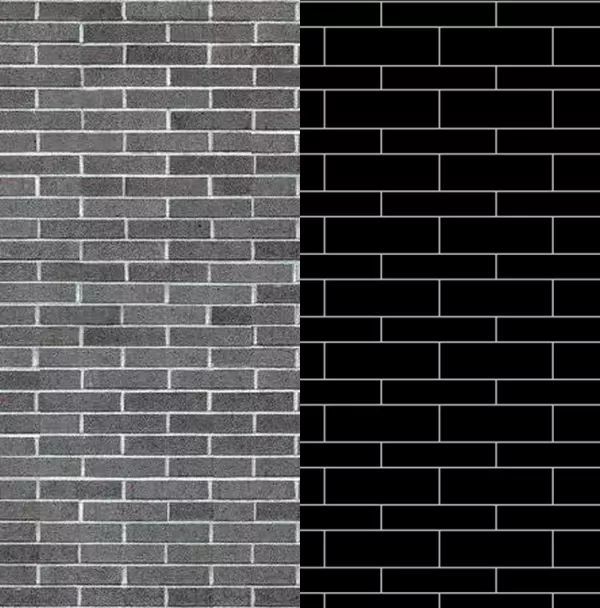项目位于Sungsoo地区一栋典型的商业建筑中。这里曾经是一片工业区,后来被改造成了一个文化中心,Nara Cellar的新红酒店便坐落于此,其设计体现了新与旧的共存。
Located in a typical commercial building type in Sungsoo district, an industrial district being transformed into a cultural hub, the new home of Nara Cellar’s wine store embodies the coexistence of the new and the old as part of the design operation.
▼项目街景,external view of the project from the street ©Jang Mi
由于项目的预算和时间有限,设计师不得不将改造的重点从重建转移到修复。墙面和搁架单元被整合在了一起,并增加了保温层。刨花板和槽钢是两种主要材料,构建起整个室内空间。设计对建筑立面进行了一系列脱胶和拆除,将大量曾经被隐藏在雨棚之下的奇特细部展现在了人们面前。
Due to budget and scheduling, the project had to be reimagined from a renovation to a repair. The wall assembly and the shelving units were integrated into a single assembly with added insulation, and used osb panels and studs as the two materials to be used for building up the interior. The exterior of the building was designed through series of delamination and demolition, revealing many of the bizarre details that were hidden under the canopy.
▼建筑立面,building facade ©Jang Mi
▼不同的立面材料,different facade materials ©Jang Mi
▼经过拆除后裸露的立面,exposed facade after demolition ©Jang Mi
▼拆除后的立面细部,facade details after demolition ©Jang Mi
▼入口空间,entrance space ©Jang Mi
▼展示区,display area ©Jang Mi
▼由刨花板和槽钢组成的空间,space composed by osb panels and U-shaped steel ©Jang Mi
▼从展示区看向品酒室,view to the tasting room from the display area ©Jang Mi
▼品酒室,tasting room ©Jang Mi
将未经表面处理的材料使用在室内墙面和家具上并非是为了简单体现材料的粗糙质感,更是为了达到一种文雅而坚定的效果,体现首尔的材料文化。
The operation of delaminating and ornamentalizing wall assembly elements into interior fixtures is not to simply display rawness of these materials but to achieve refinement and resoluteness through assembly of operations that are in tune with the material culture of Seoul.
▼材料细部,material details ©Jang Mi
该项目由one-aftr和韩国建筑师sowayo合作完成。
one-aftr was joined by korean architect sowayo for the completion of the project.
▼夜景,night view ©Jang Mi
Year: 2020 Status: Built Collaborator: Sowayo Location: Seoul, Korea Contractor: FULL DESIGN Photo Credit: Jang Mi
{{item.text_origin}}

